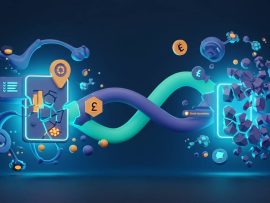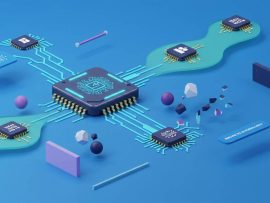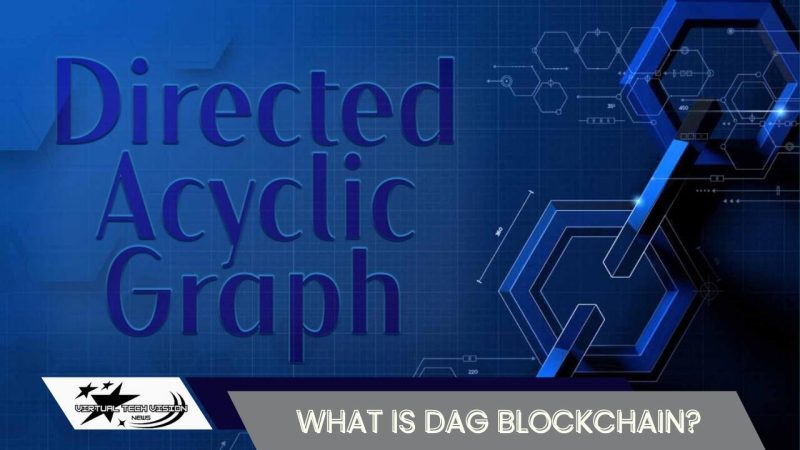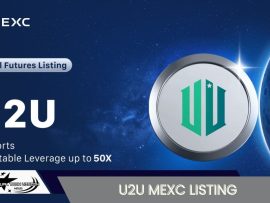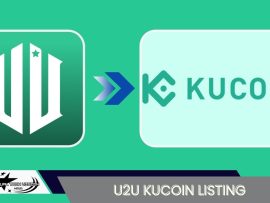What is DAG Blockchain? This is an advanced technology in the blockchain space that differs significantly from traditional blockchains. With its Directed Acyclic Graph (DAG) structure, this technology enables fast transaction processing, energy efficiency, and easy scalability without the need for transaction blocks. This article will help you understand DAG Blockchain, how it works, its benefits, and its applications in current cryptocurrency projects.
Contents
What is DAG Blockchain?
Directed Acyclic Graph (DAG) is a special data structure used in some new blockchain platforms. The distinctive feature of DAG is that it does not require transactions to be arranged in a sequential block chain. Instead, DAG organizes data in the form of a graph with directed nodes and edges connecting them. Each transaction in a DAG references older transactions, forming a tightly linked network of transactions.
The main difference between DAG and traditional blockchains (such as Bitcoin or Ethereum) is how transactions are processed and validated. In traditional blockchains, transactions are validated and recorded in blocks, which are then linked together in a chain. In contrast, DAG does not use blocks; instead, transactions are directly connected to each other, allowing for simultaneous transactions without waiting for the next block. This enhances scalability and minimizes congestion within the network.
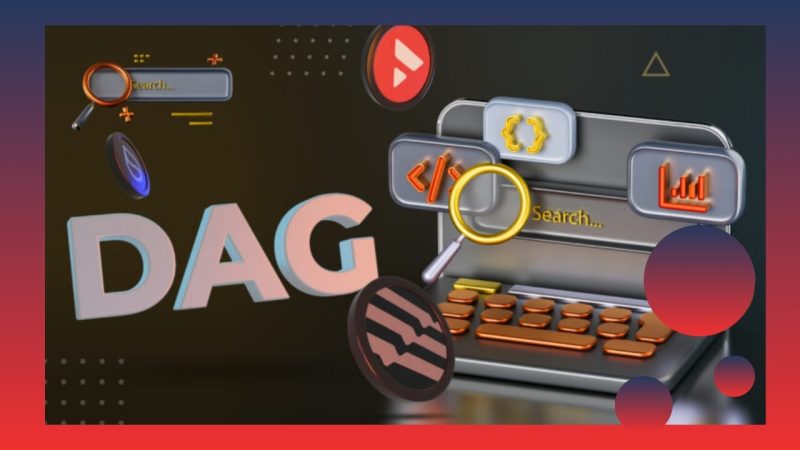
How DAG Blockchain works
One of the standout features of DAG Blockchain is its unique transaction processing method. While traditional blockchains rely on miners to create blocks and validate transactions, DAG does not require miners. Instead, network participants validate their transactions by referencing previous transactions.
This structure eliminates intermediate steps in the validation process, helping to reduce transaction latency. This not only cuts costs but also saves energy since miners are not needed to solve complex computational problems. In the DAG system, each transaction acts as an element in a network, directly linking with other transactions to form a more powerful and efficient decentralized system.
With this method, there are no fixed blocks in DAG; instead, transactions are recorded in the network in real-time. This helps increase transaction speed and lower transaction costs, especially in systems with a high volume of transactions.
Benefits of DAG Blockchain
DAG Blockchain offers several advantages over traditional blockchains, particularly in scenarios that require high scalability and fast transaction processing speeds. Here are some of the notable benefits of DAG:
- Faster transaction speeds: One of the greatest advantages of DAG is its ability to process transactions extremely quickly. In traditional blockchain systems, each transaction must be processed and confirmed within a block, which is then added to the blockchain. This results in each transaction waiting its turn for validation. In DAG, transactions can be processed simultaneously without queuing. This reduces transaction processing time and increases the overall efficiency of the network.
- Energy efficiency: The DAG system does not require the complex mining process seen in traditional blockchains, where miners must solve complex computational problems to confirm transactions. Since mining is not necessary, DAG helps save a significant amount of energy, which is especially important in the context of climate change and the growing demand for environmental protection.
- Superior scalability: Traditional blockchains face scalability issues as the number of users and transactions increases. Problems such as network congestion and high transaction costs are common in traditional blockchain systems. However, DAG can scale easily because it does not process blocks in the traditional way. Transactions can occur simultaneously without being affected by the speed of other transactions.
- Free transactions: Since DAG does not require miners and does not involve blocks, transaction fees can be minimized or even eliminated. This helps reduce costs and encourages the use of DAG in cryptocurrency applications or micro-transactions, where transaction fees can be a barrier if not optimized.
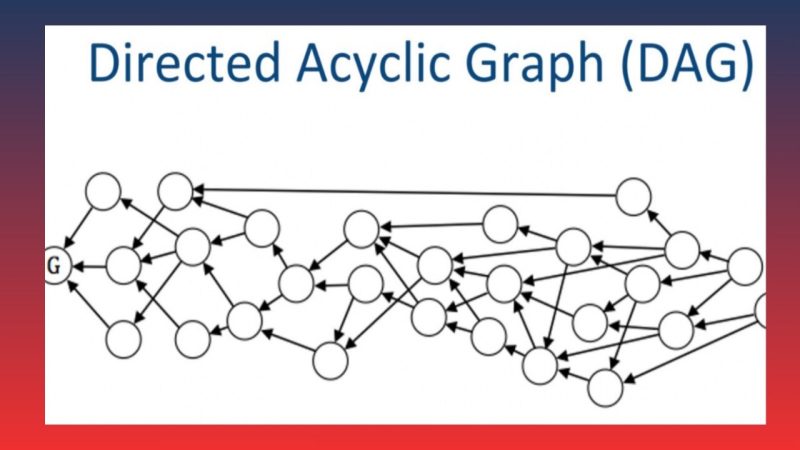
Projects using DAG Blockchain
U2U Chain
- Introduction: U2U Chain is a blockchain project designed specifically to support the DePIN (Decentralized Physical Infrastructure Networks) platform. It uses DAG Blockchain technology to address issues related to scalability, transaction speed, and energy consumption. U2U Chain uses DAG to enhance decentralization, reduce transaction costs, and support applications related to IoT, decentralized storage, and wireless networks.
- Benefits of DAG in U2U Chain: By using DAG, U2U Chain optimizes transaction performance, allowing for fast transaction validation without mining and saving energy. Transactions are processed in parallel, creating a flexible and easily scalable network.
IOTA
- Introduction: IOTA is one of the leading projects that uses Tangle, a form of DAG Blockchain. Designed to address the challenges of traditional blockchains, IOTA focuses on applications within the Internet of Things (IoT). Tangle allows transactions to occur without mining, and transaction fees are almost nonexistent.
- Benefits of DAG in IOTA: IOTA uses DAG to eliminate blocks in blockchain, enabling each user to participate in the transaction validation process by confirming previous transactions. This allows the IOTA network to handle millions of transactions per second without congestion issues, while also saving energy and costs.
Nano
- Introduction: Nano is another prominent cryptocurrency that uses block lattice technology, which combines DAG Blockchain and separate blocks for each user. Each user has an independent blockchain where they can perform transactions without waiting for network consensus.
- Benefits of DAG in Nano: Nano uses DAG to eliminate transaction fees, making transactions nearly free and extremely fast. With block lattice, each transaction is processed independently without relying on the large network, reducing congestion and enhancing network availability.
Hedera Hashgraph
- Introduction: Hedera Hashgraph is an alternative blockchain platform that uses Hashgraph, a form of DAG. Hedera allows for fast, secure transactions with much higher scalability compared to traditional blockchains. It is designed to provide robust infrastructure for enterprise applications and DApps.
- Benefits of DAG in Hedera Hashgraph: Hedera Hashgraph uses virtual voting and gossip protocols to achieve rapid consensus without mining, helping save energy and time. The DAG structure allows Hedera to process thousands of transactions per second, making it an ideal solution for businesses and applications requiring ultra-fast transaction speeds.
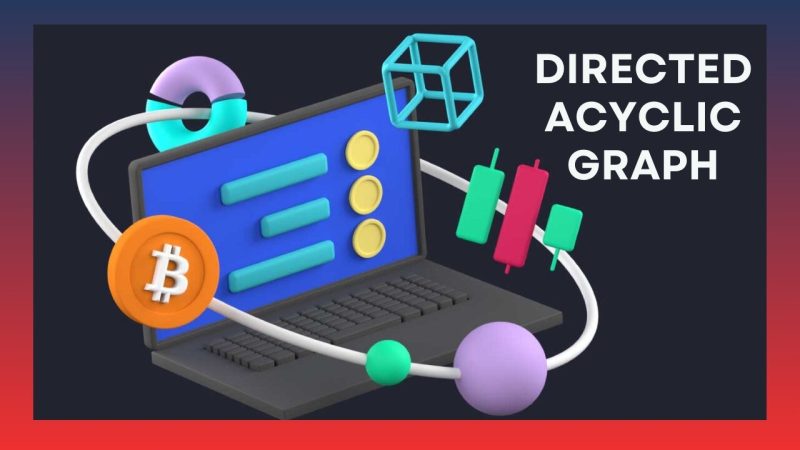
DAG Blockchain is a promising solution to address scalability, transaction speed, and energy efficiency issues faced by traditional blockchains. While there are still challenges to overcome and the technology is not fully mature, DAG remains a promising innovation and could become a trend in the future. With the ability to handle millions of transactions per second and low costs, DAG could serve as a crucial platform for next-generation blockchain applications, from cryptocurrencies to decentralized applications.
Virtual Tech Vision hopes that this article has helped you understand the term “What is DAG Blockchain?” If you have any questions or comments about this article, feel free to leave them below, and we will quickly respond and assist you.

